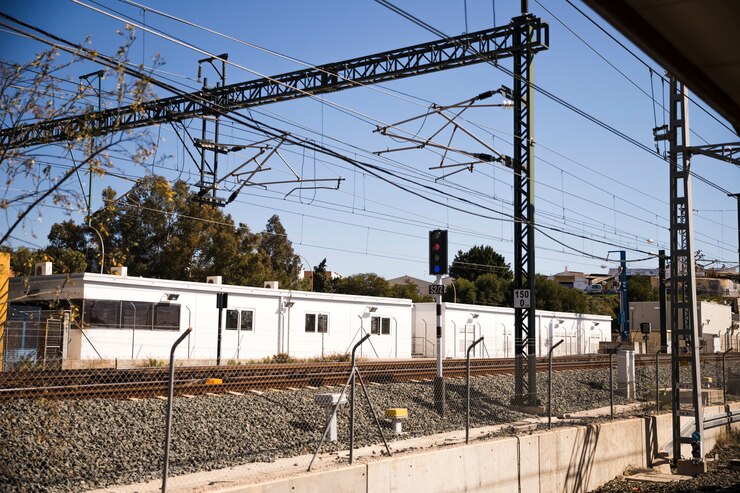Contatc
Power Grid Infrastructure: Backbone of Modern Energy Systems
2025-02-13
The Evolution of Power Grid Infrastructure: Building a Resilient, Smart Energy Future
Installing power grids has become a necessity in today’s world for every developed as well as developing economy. As the structure of society all over the world is moving towards the demand for intelligent and sustainable energy the infrastructure related to electricity generation, transmission, and distribution has to develop. In this article let’s focus on outlining the significance of power grid infrastructure, the components that are present in it, and some technologies in power grid infrastructure that will define the future of the power grid.
What is Power Grid Infrastructure?
Electric power delivery system means the systems that consist of equipment for transmission and distribution of electric energy from the power stations to the consumers. This utility is composed of several sub-sectors that all contribute to the provision of electricity and the management of its distribution to consumers.
There are now meetings that specify these details and the main components of power grid infrastructure include the following;
Power stations: Industrial facilities where electricity is produced from fuels and energy resources such as fossil fuels, and uranium as well as natural resources such as wind, solar, and water.
Transmission line: It is a high-voltage overhead line that is used to transmit electricity from the power station to the substation.
Substations: These are establishments that transform the voltage of electricity before distributing it to the distribution network.
Transmission Network: Power cables that transmit electricity from generation points directly to sub-stations Distribution: Power cables that distribute low voltage electricity from sub-stations to consumers.
Energy Storage: It is where electrical power generated is stored for use later depending on the need arising or to balance the amount produced and consumed by the end users.
The Importance of Grid Modernization
Green upgrade is a fundamental process that can be used to tackle some of the current issues affecting grid integration. Having incorporated modern technologies in the previous systems and embracing new technologies utilities can enhance operational efficiencies, reliability, and readiness.
Smart Grid Technologies
A smart grid refers to the electrical grid that is computerized and automated in the distribution and management of electricity supply. These systems can forecast the demand for electricity in real time thus giving better control over demand and preventing power cuts.
Some of the Technologies Applied in the Smart Grid are;
AMI: Smart meters that help utilities in metering and managing customers; usage of electrical energy efficiently.
Smart Grids: Products that can change the consumers’ electricity use in critical hours to ease pressure on the energy grid.
Grid Automation: Self-diagnosing and self-repairing networks that can localize and eliminate errors on apparatus without external intervention and with little to no working interruption.
Microgrids and Distributed Generation
In this type of system, the generation of electricity is done in small and controllable networks, unlike the main utility grid. They use solar, wind, hydro, geothermal, and other forms of electricity generation, storage technologies, and microgrid control to produce clean electricity to supply and support the power demands of communities. Microgrids, therefore, have important functions of boosting grid reliability in case of power failures.
Distributed energy generation refers to the generation of energy in small quantities in locations that are close to the load centers. Examples of such systems consist of solar PV installations on rooftops, small-wind turbines, or CHP systems. Thus, distributed generation decreases dependency on the centrally operated grid, as well as contributes positively towards system reliability.
Energy Storage
Under energy storage systems, aspects like batteries help in developing the new generation of power storage systems. They enable utilities to recharge energy from renewables during low-demand periods and discharge in periods of high demand. This improves grid resilience, especially in circumstances where there are high levels of integration of renewable energy sources into the main framework.

The Role of Power Grid Infrastructure in Economic Growth
Any nation that aims to improve the economic status of its populace depends on a stable Power Sector. When there is no proper system in place to deliver energy to markets, organizations, homes, and factories they cannot carry out their operations. Efficiency and development of the electricity grids are strongly correlated to economic development since they ensure the availability of cheap electricity to all facets of society.
In the developing world, an extension of the modern power grid bears the potential of fortifying the industrial base, providing people with employment opportunities, and encouraging foreign investment. In more developed economies, the modernization of the grid has the potential to increase the efficiency of production, ensure lower costs in the energy sector, and make the environment greener.
Technologies That are Reformatting the Power Grid Network
However, the energy sector is expanding and there is an emergence of technologies to improve power grid assets. Among such significances include:
High-Voltage Direct Current (HVDC) Transmission
AC transmission on the other hand refers to a type of transmission whereby electricity is sent over a long distance without much loss. One of the most important application areas is the link between large-scale renewable power plants like offshore wind power plants and the existing power grid.
Grid-Edge Technologies
Smart technologies can be termed as the ability to exert more control as power enters the grid or grid-edge technologies. Some of the existing technologies include distributed energy storage systems, demand-side management instruments as well as monitoring instruments. It can benefit both the consumer as well as the utility in managing the energy usage as well as betterment of the grid.
Conclusion
Power grid infrastructure is at a pivotal moment in its evolution. As technology advances, so too do the opportunities for improving the reliability, efficiency, and sustainability of our energy systems. From integrating renewable energy to enhancing grid resilience against natural disasters and cyber threats, the future of power grids looks smarter, greener, and more interconnected than ever before.
Investing in the modernization of power grid infrastructure is essential not only for meeting the energy demands of today but also for ensuring a sustainable energy future.

Hey, I’m Chunjian Shu
"X.Y. Tower: Reliable, innovative solutions for high-quality towers and electrical equipment with professional service.
